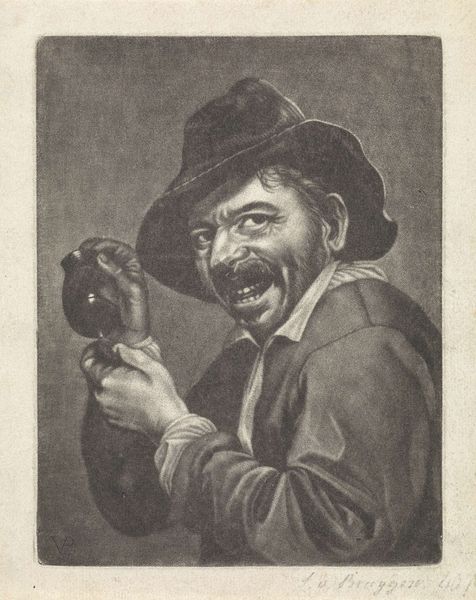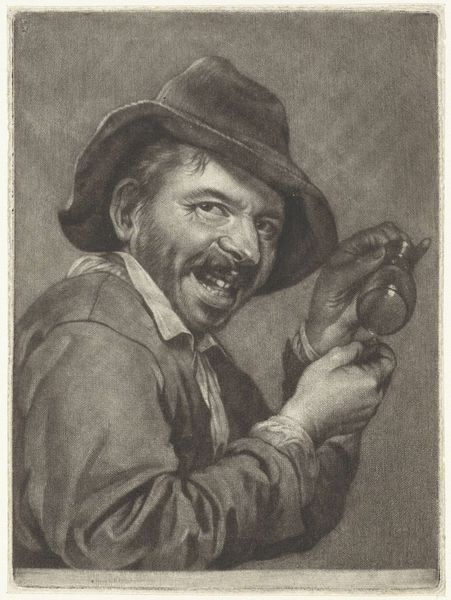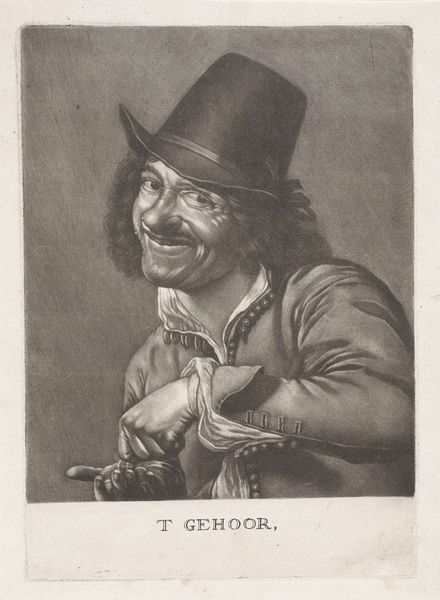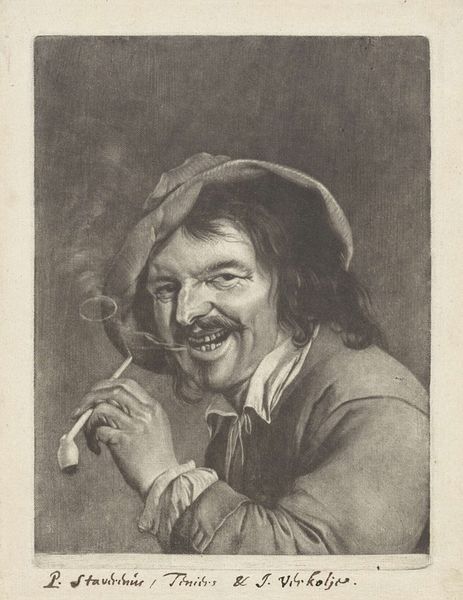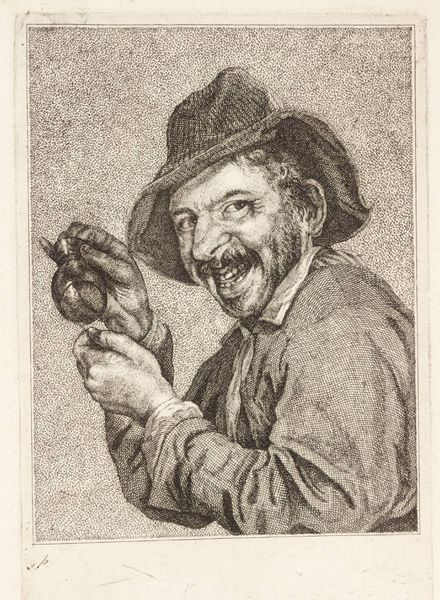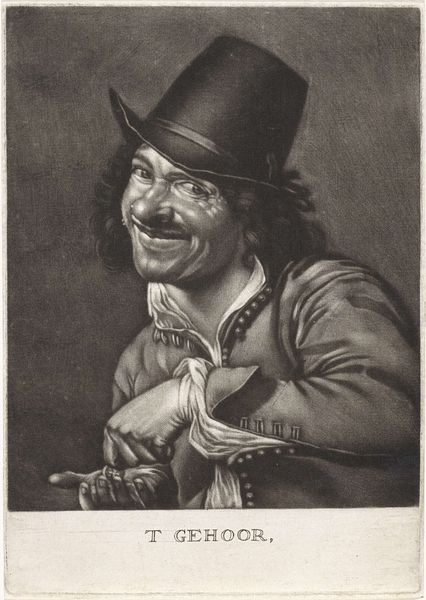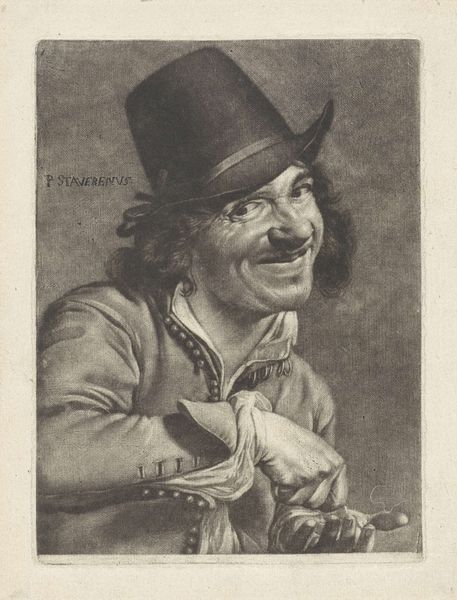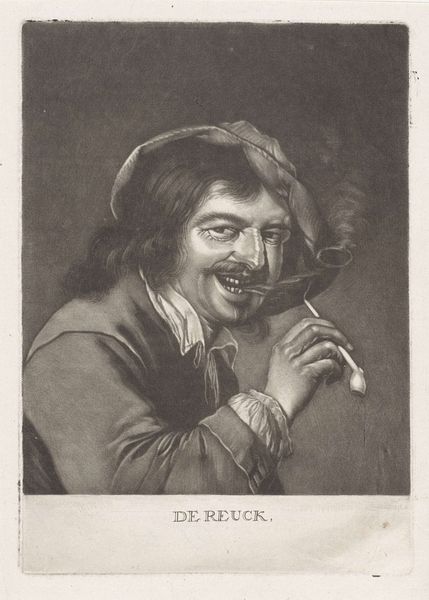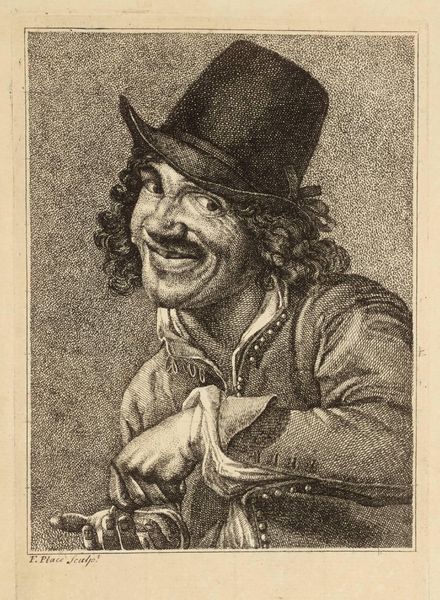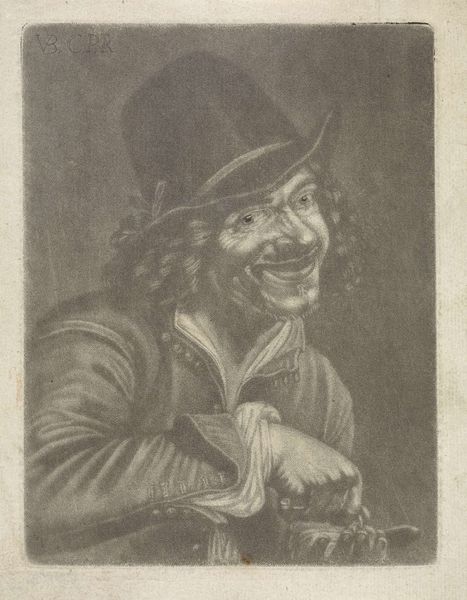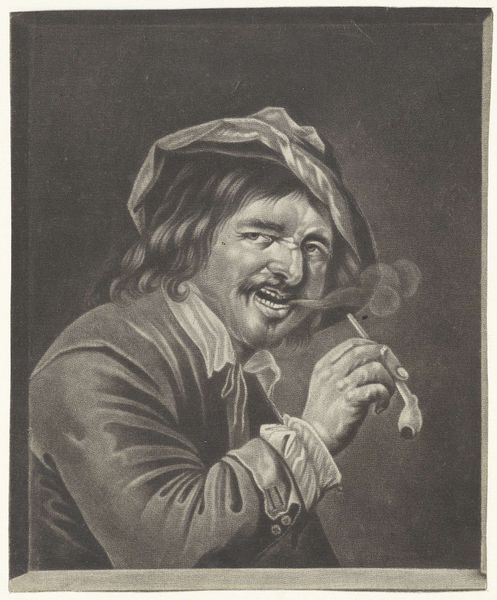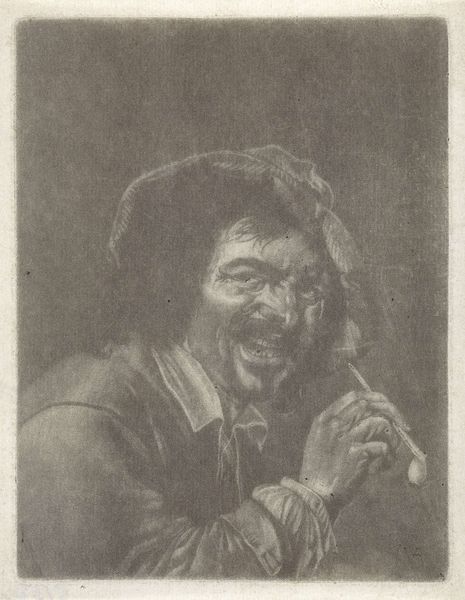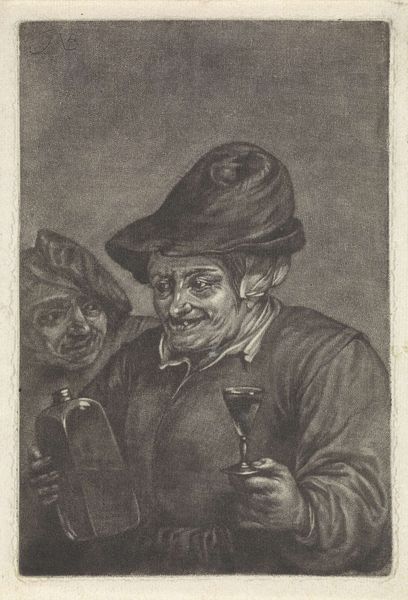
engraving
#
portrait
#
baroque
#
caricature
#
caricature
#
pencil drawing
#
genre-painting
#
engraving
Dimensions: height 193 mm, width 133 mm
Copyright: Rijks Museum: Open Domain
Curator: What a striking expression! "Man met een leeg glas (de Smaak)," dating somewhere between 1670 and 1800 and rendered in engraving, certainly leaves an impression. Editor: It does, doesn’t it? There’s almost something unsettling about his glee. The title translates to "The Taste," and it clearly depicts a figure who’s had a bit too much. Curator: Let's focus on the method. Notice the quality of line work—a true testament to the engraver’s skill in handling metal tools and creating a range of textures, despite the ambiguity around the author’s identity. Editor: And consider the context! Genre painting like this gained popularity reflecting—and often satirizing—everyday life. "De Smaak" perhaps pokes fun at indulgence and excess, highlighting themes of class and social behavior of that era. How does this feed into notions of "taste"? Curator: Absolutely. It is so clearly about sensory experience! How the tactile interaction of the hands clasping that glass or vessel is captured, translated, and then consumed through visual perception of viewers across the ages... It begs questions about what's consumed in front of, and behind, the artwork, too. Editor: This piece offers a fascinating window into attitudes towards consumption, masculinity, and even addiction in a bygone era, raising pertinent questions about labor, its worth, the engraver's identity and what could his relationship to the subject or to 'taste' even be! Curator: Ultimately, that complexity in method mirrors the complexity in themes. It's more than just an amusing face, the artwork reflects the material constraints that shape a society's artistic production. Editor: A compelling dance of material realities and cultural commentaries that invites ongoing dialogue, indeed!
Comments
No comments
Be the first to comment and join the conversation on the ultimate creative platform.

